RESEARCH & SCIENCE
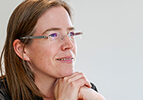 COMPARATIVE LITERATURE
COMPARATIVE LITERATUREEuropean travelogues in context
Dr. Sandra Vlasta joined the Gutenberg Institute for World Literature and Written Media of Johannes Gutenberg University Mainz in October 2017 with a Marie Skłodowska-Curie Fellowship. Here, the Viennese expert in comparative literature is currently working on her research project on European Travelogues in Context. The Socio-Political Dimension of Travelogues in Europe: 1760 – 1850.
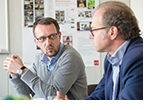 JIHADISM ON THE INTERNET
JIHADISM ON THE INTERNETTracking down Islamist propaganda
The Jihadism on the Internet interdisciplinary junior research group started last year. The researchers analyze online radical Islamist propaganda and track down all individuals that respond in any way to this kind of material. The group is also preparing a unique online platform. The project at the Department of Anthropology and African Studies at Johannes Gutenberg University Mainz receives funding from the German Federal Ministry of Education and Research (BMBF) to the tune of EUR 2.7 million.
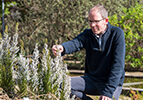 EVOLUTIONARY BIOLOGY
EVOLUTIONARY BIOLOGYOn the trail of biodiversity
In order to research the mechanisms involved in speciation, Dr. Michael Pirie has selected a plant genus which actually originated in Europe but which has developed into an unbelievable number of varieties mainly in South Africa. The botanist, who works at the Institute of Organismic and Molecular Evolution (IOME) at Johannes Gutenberg University Mainz (JGU), has been following the trail of the Ericaceae (heather) family for a decade now.
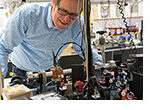 PRISMA CLUSTER OF EXCELLENCE
PRISMA CLUSTER OF EXCELLENCEThe proton radius puzzle
His results have made headlines beyond the academic world of physics. In May 2016, Randolf Pohl was appointed to a professorship at the PRISMA Cluster of Excellence of Johannes Gutenberg University Mainz (JGU). Using a new technique, he succeeded in measuring the size of the proton, one of the fundamental building blocks of the atomic nucleus. According to his results, the radius of the proton is four percent smaller than the previous value accepted by science. This result is puzzling and could have serious consequences for the Standard Model of particle physics.
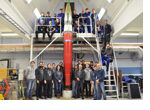 RESEARCH ROCKET
RESEARCH ROCKETPioneering measurements in space
The MAIUS-1 sounding rocket mission has enabled physicists to generate a Bose-Einstein condensate in space for the first time. This will allow them to measure the Earth's gravitational field more precisely in the future and, crucially, to test Einstein's equivalence principle more accurately than ever before. The research group Experimental Quantum Optics and Quantum Information at Johannes Gutenberg University Mainz (JGU) is closely involved in the project.
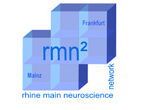 RHINE-MAIN NEUROSCIENCE NETWORK
RHINE-MAIN NEUROSCIENCE NETWORKIn shape for the German Excellence Strategy competition
The Rhine-Main Neuroscience Network (rmn²) looks back on five successful years and is now preparing to meet the challenges of the next half decade. rmn2 is expanding and planning to prove its scientific strength in the upcoming Excellence Strategy competition. Some 300 neuroscientists based in the Rhine-Main region came together for a three-day symposium during which they exchanged views, listened to presentations given by eminent colleagues, and drew up plans for the future.
 UNIVERSITY MEDICAL CENTER
UNIVERSITY MEDICAL CENTERCenter for Rare Diseases
The Center for Rare Diseases of the Nervous System (ZSEN) at Mainz University Medical Center was opened in late 2015. It is a key node in a new network of centers designed to treat people with rare diseases. It was previously the case that the majority of people suffering from these diseases had very low chances of receiving the correct diagnosis or successful treatment.
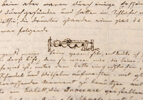 CLEMENS BRENTANO COLLECTION
CLEMENS BRENTANO COLLECTIONThe mouse, the poet, and the dance
The Clemens Brentano Collection provides intimate insights into the life and world of one of the greatest German Romantic poets. Along with hundreds of examples of lively correspondence, there are drafts of poems and household plans, outlines for dramas and drawings. The collection, which was acquired by Johannes Gutenberg University Mainz (JGU) in 1950, is housed in the Mainz City Library.
 ICE LABORATORY
ICE LABORATORYThe riddle of the icy droplets
In order to understand atmospheric processes, it is necessary to discover how ice nuclei form within clouds. This is the task of the INUIT research group, to which Johannes Gutenberg University Mainz (JGU) is contributing. A team in the laboratory of the Institute of Atmospheric Physics is working with small drops, a wind tunnel like no other in the world, and a special cold chamber that will help find answers to these fundamental questions.
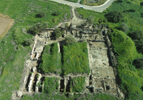 ANCIENT STUDIES
ANCIENT STUDIESSaving a desert palace in the green Jordan valley
The caliph's palace Khirbat al-Minya is an important testimony to early Islamic culture in Israel. However, the site has been falling into disrepair ever since German archaeologists uncovered it in the 1930s. Dr. Hans-Peter Kuhnen, Head Academic Director at the Department of Ancient Studies at Johannes Gutenberg University Mainz (JGU), has taken a first step to wards stopping the decay.
